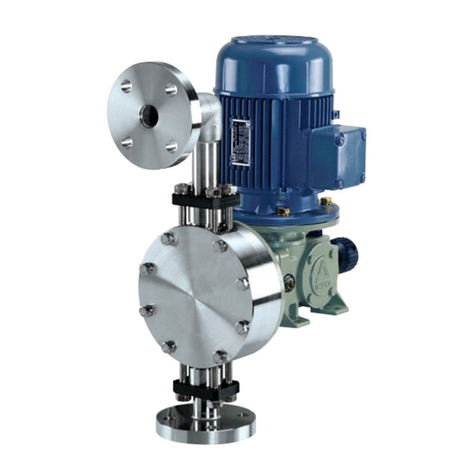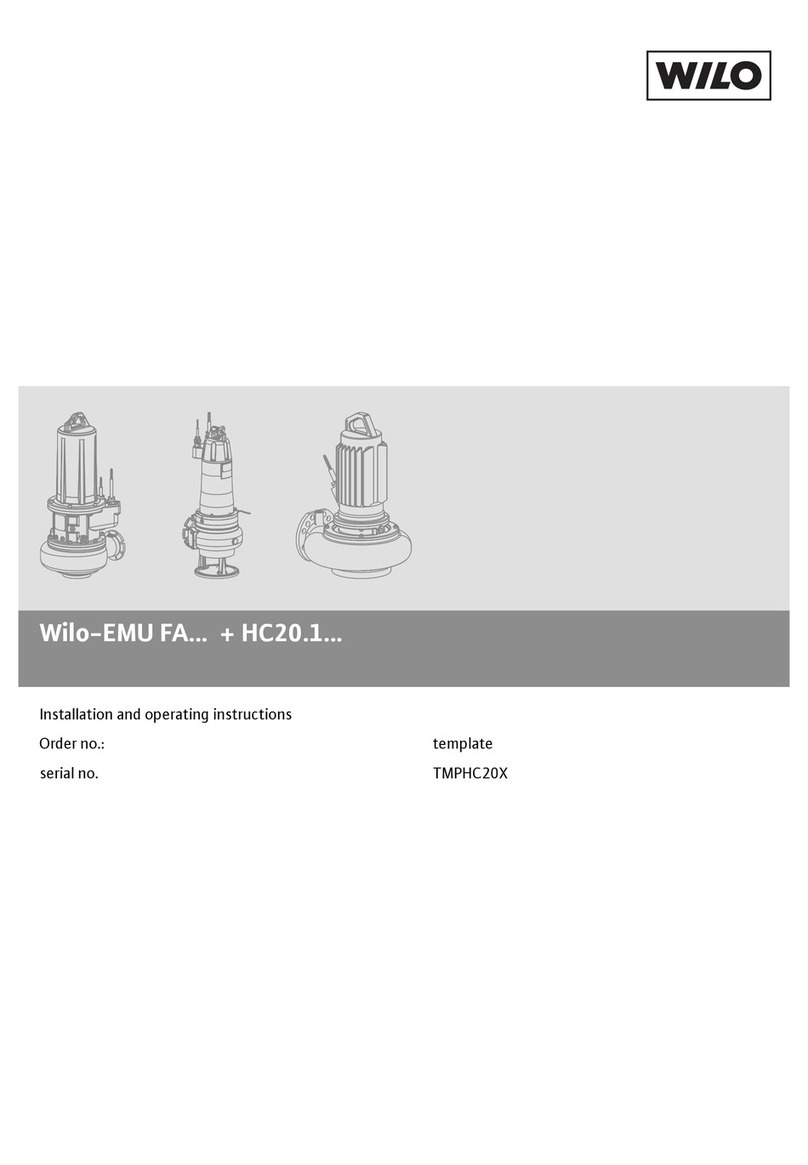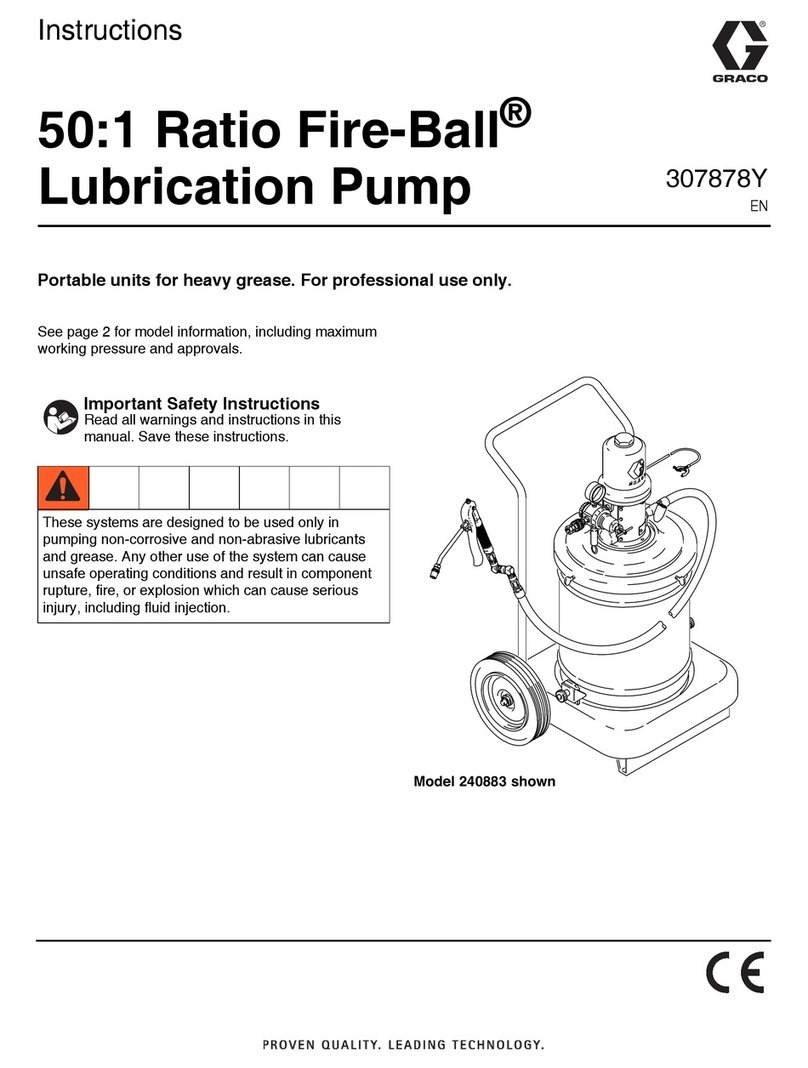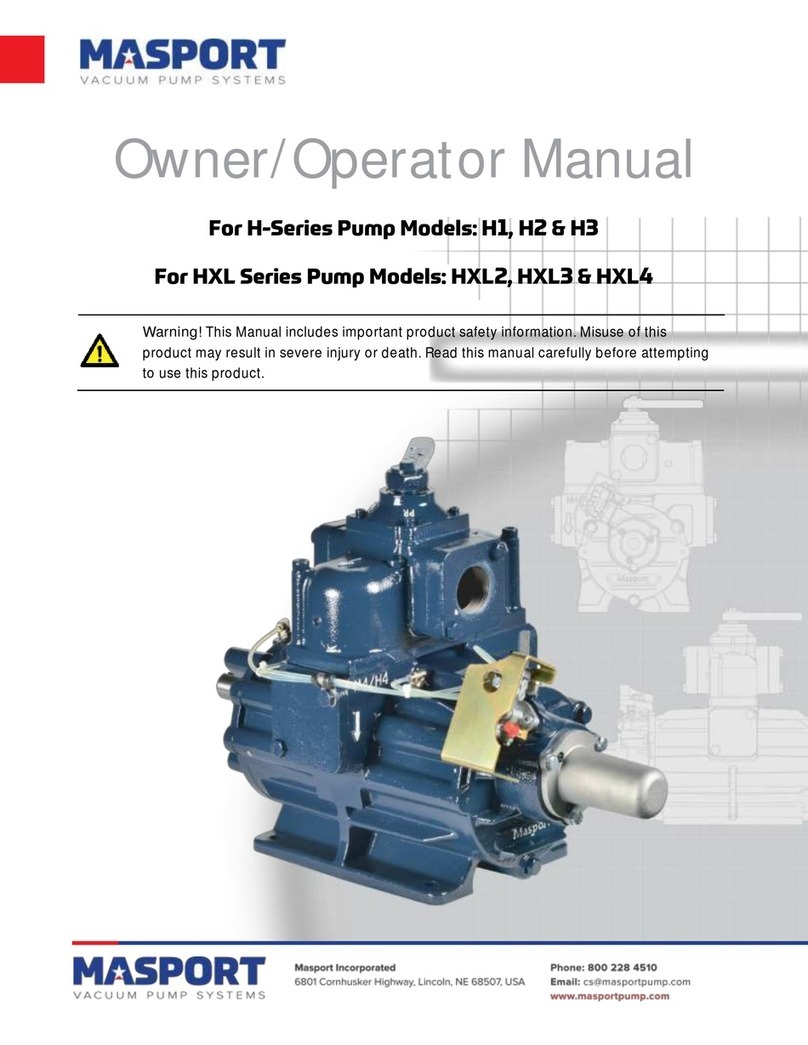Ilsco TaskMaster TB-PMP User manual

Instruction manual
Model: TB-PMP
Read and understand all of the instructions and
safety information in this manual before operating
or servicing this tool.
TaskMaster from ILSCO
4730 Madison Road
Cincinnati OH 45227
www.ilsco.com
Phone:
800-776-9775
513-533-6200

Pg. 2
TB-PMP
Table of Contents
1.
Warranty and Service/Safety Symbols Page 3
2. General Battery Operated Tool Safety Information Page 4-5
3.
Pump Parts Identication Page 6
4.
Kit Includes Page 7
5.
Technical Specications Page 8
6.
Functional Description of Battery Charger and Battery Pack Page 9
7. Battery Charger Page 10-11
8.
Battery Pack Page 12-13
9.
Pump Setup Page 14-15
10. Operating Instructions Page 16-18
11.
Tool Maintenance Page 19
12.
Tool Parts Breakdown Page 20
13.
Parts List Page 21
14.
Software Installation Page 22
THANK YOU...
for buying an ILSCO TaskMaster Tool. Our mission is to bring product innovation and exceptional
customer service to the marketplace. This tool line is reliable, dependable, and durable for our
customer’s needs.
Please read this instruction manual carefully before using the product. If you have any questions
about our product please reach out to our customer service department (see back cover). The
contents of this manual may not be reproduced, transmitted or circulated in any form or by any
means without the prior written authorization of TaskMaster from ILSCO.

Pg. 3
TB-PMP
1. Warranty and Service
5-Year Tool Service Protection Program
The industry’s best service & support program for all your ILSCO TaskMaster battery
powered pump tool. Buyers can be registered in the Service Protection Program at
www.ilsco.com/taskmaster-warranty and will receive free tool repairs for defects in material or
workmanship on their tool(s) for ve years after their original purchase date. (Excludes abuse, non-
intended use, or tampering.)
5 Day Repair Pledge
If your tool needs repaired at any time within ve years of your original purchase date, our service
network will repair your registered tool free of charge and usually within ve business days of
receipt.
Tool Loaner Program
If you need a replacement tool during any repair, our network will provide a comparable loaner tool
while your tool is being repaired.
FREE Tool Reconditioning
Your rst reconditioning is on us! Call us in about 20,000 cycles.
To Find a Service Partner
Call ILSCO for assistance in solving tool performance issues or for any of your service needs. ILSCO
tool owners will be oered options to solve any tool replacement, parts or repair issues.
Call 513-533-6200 or 800-776-9775
Monday to Friday
8:00AM to 5:00PM Eastern Time (ET)
MILWAUKEE BATTERIES- LIMITED 3-YEAR WARRANTY
Every MILWAUKEE Battery Pack (sold with ILSCO Battery-Powered product and/or as a replacement
battery pack) is warranted to the original purchaser only to be free from defects in material and
workmanship. Subject to certain exceptions, MILWAUKEE will repair or replace a battery pack
which, after examination, is determined by MILWAUKEE to be defective in material or workmanship
for the stated warranty period from date of purchase. Return of the battery pack to a MILWAUKEE
factory Service Center location or MILWAUKEE Authorized Service Station, freight prepaid and
insured, is required. For the proper shipping procedure of battery packs, contact 1.800.SAWDUST
(1.800.729.3878), or go to www.milwaukeetool.com. A copy of the proof of purchase should
be included with the return product. This warranty does not apply to damage that MILWAUKEE
determines to be from repairs made or attempted by anyone other than MILWAUKEE authorized
personnel, misuse, alterations, abuse, normal wear and tear, lack of maintenance, or accidents.

Pg. 4
TB-PMP
2. General Battery Operated Tool Safety Information
Read all safety warnings, instructions provided with this battery operated tool. Failure to
follow all instructions listed below may result in electric shock, re and/or serious injury.
Save all warnings and instructions for future reference.
WORK AREA SAFETY
• Keep work area clean and well lit. Cluttered or dark areas invite accidents.
• Do not operate battery powered tools in explosive atmospheres, such as in the
presence of ammable liquids, gases or dust. Power tools create sparks which may
ignite the dust or fumes.
• Keep children and bystanders away while using a battery operated tool. Distractions
can cause injuries.
PERSONAL SAFETY
• Stay alert, watch what you are doing and use common sense when operating a
battery powered tool. Do not use a battery powered tool while you are tired or under
the inuence of drugs, alcohol, or medication.
• Use personal protective equipment. Always wear eye protection. Protective
equipment such as a dust mask, non-skid safety shoes, hard hat or hearing
protection for appropriate conditions will reduce personal injuries.
• Do not overreach. Keep proper footing and balance at all times. This enables better
control of the tool in unexpected situations.
• Do not let familiarity gained from frequent use of tools allow you to become
complacent and ignore tool safety principles. A careless action can cause severe
injury.
TOOL USE AND CARE
• Do not force the battery operated tool. Use the correct tool for your application. The
correct tool will do the job better and safer at the speed for which it was designed.
• Remove the battery pack from the tool before making any adjustments changing
accessories, or storing tools. Such preventive safety measures reduce the risk of
starting the battery operated tool accidentally.
Description of Safety Symbols:
Do not dispose
of product.
Please recycle
Electric Shock
Hazard- use
proper protective
equipment
Attention!
Risk of
cutting injury
Never use
with unlocked
workhead
Read the operating
instructions
before use
Wear protective
goggles

Pg. 5
TB-PMP
• Store idle tool out of the reach of children and do not allow persons unfamiliar
with the tool, or these instructions, to operate the tool. Battery operated tools are
dangerous in the hands of untrained users.
• Maintain battery operated tools and accessories. Check for misalignment or binding
of moving parts, breakage of parts and any other condition that may aect the
tool‘s operation. If damaged, have the tool repaired before use. Many accidents are
caused by poorly maintained tools.
• Keep cutting tools sharp and clean. Properly maintained cutting tools with sharp
cutting edges are less likely to bind and are easier to control.
• Use the battery operated accessories in accordance with these instructions, taking
into account the working conditions and the work to be performed. Use of the tool
for operations dierent from those intended could result in a hazardous situation.
BATTERY USE AND CARE
• Recharge only with the charger specied by the manufacturer. A charger that
is suitable for one type of battery pack may create a risk of re when used with
another battery pack.
• Use power tools only with specically designated battery packs. Use of any other
battery packs may create a risk of injury and re.
• When battery pack is not in use, keep it away from other metal objects like paper
clips, coins, keys, nails, screws or other small metal objects, that can short circuit
from one terminal to another. Shorting the battery terminals together may cause
burns or a re.
• Under abusive conditions, liquid may be ejected from the battery; avoid contact.
If accidental contact occurs, ush with water. If liquid contacts eyes, seek medical
help. Liquid ejected from the battery may cause irritation or burns.
• Do not use a battery pack or tool that is damaged or modied. Damaged or
modied batteries may exhibit unpredictable behavior resulting in re, explosion or
risk of injury.
• Do not expose a battery pack or tool to re or excessive temperature. Exposure to
re or temperature above 265°F (130°C) may cause an explosion.
• Follow all charging instructions and do not charge the battery pack or tool
outside the temperature range specied in the instructions. Charging
improperly or at temperatures outside the specied range may damage the
battery and increase the risk of re.
SERVICE
• Have your tool serviced by a qualied repair technician using only certied
replacement parts. This will ensure that the safety of the power tool is maintained.
• Never service damaged battery packs. Service of battery packs should only be
performed by the manufacturer or authorized service providers.

Pg. 6
TB-PMP
LED operating indicator lights
Return adjustment knob
Shoulder strap connector
Label
Remote pump cord
Remote connection
Hydraulic connection
3. Pump Parts Identication
Battery compartment
Oil cap
USB interface
Air Filter
Manual release switch
13
}

Pg. 7
TB-PMP
4. Kit Includes
1 Battery Powered Pump 2 Milwaukee 5.0 Ah Batteries
1 Milwaukee 120V Charger 1 Shoulder Strap
1 Bag 1 Remote Pump Cord
1 Non-Conductive Hose 1 USB Cable
1 Male Adapter 1 Female Adapter

Pg. 8
TB-PMP
5. Technical Specications
Output Pressure: 10,000 PSI
Battery voltage: 18 V
Battery capacity: 5.0 Ah
Type of battery: Lithium-ion
Charging time: 60 min (approx)
Hydraulic oil: Shell Tellus S2 V 15
Oil capacity: 25 oz (45.1 in
3
)
Operating temperature range: -14°F to 104°F
Dimensions: 11.6 in x 8.1 in x 7.4 in (L x H x W)
Weight: 11.4 lbs. including battery
8.1 in (205mm)7.4 in (190mm)
11.6 in (205mm)

Pg. 9
TB-PMP
6. Functional Description of Battery Charger and Battery Pack
Charger Battery Pack
}
Light Indicators:
•Continuous red: Charging
• Slow flashing green: Approaching full charge
• Continuous green: Charging is complete
• Fast flashing red: Battery is too hot/cold- Charging will begin when
battery reaches correct charging temperature
• Slow flashing red: Battery charge is pending - Charging will begin
when the first pack is fully charged
• Flashing red/green: Damaged or faulty battery pack
Bays
Vents
Cord
Battery Contacts
Release Buttons
Fuel Gauge button
Fuel Gauge
}Rapid charge-capable pack indicator

Pg. 10
TB-PMP
7. Battery Charger
Charge only MILWAUKEE M18™ Li-Ion batteries in this MILWAUKEE Li-Ion charger.
Other types of batteries may cause personal injury and damage.
WHEN TO CHARGE THE BATTERY PACK WITH THIS MILWAUKEE CHARGER
Remove the battery pack from the tool for charging when convenient for you and your job.
MILWAUKEE batteries do not develop a memory when charged after only a partial discharge. It is
not necessary to run down the battery pack before placing it on the charger.
• Use the Fuel Gauge to determine when to charge your MILWAUKEE Li-Ion battery pack.
• You can Top-O your battery pack‘s charge before starting a big job or long day of use.
• The only time it is necessary to charge the MILWAUKEE Li-Ion battery pack is when the battery
pack has reached the end of its charge. To signal the end of charge, power to the tool will
drop quickly, allowing just enough power to nish a pump cycle. Charge the battery pack as
needed.
HOW TO CHARGE THE BATTERY PACK
Align the battery pack with the bay and slide the battery pack into the charger as far as possible.
The red light will come on, either ashing quickly (battery pack is too hot or cold), ashing slowly
(battery pack is waiting for another pack to nish charging) or continuous (pack is charging).
• A fully discharged battery pack with an internal temperature in the normal range will charge
in about 30 to 185 minutes, depending on the battery pack.
• Heavily cycled batteries may take longer to charge completely.
• The Fuel Gauge lights on 18V battery packs are displayed as the pack is being charged,
indicating the charge level. The fuel gauge will turn o when charging is complete.
• After charging is complete, the green light will stay on continually.
• The charger will keep the battery pack fully charged if it is left on the charger. The light
indicator will ash green during this maintenance charging.
• The second battery pack inserted in the charger will begin charging when the rst battery
pack is fully charged.
• If the light indicator ashes red and green, verify that the battery pack is fully seated into the
bay. Remove the battery pack and reinsert. If the light continues to ash red and green,
remove pack(s) and unplug charger for at least 2 minutes. After 2 minutes, plug charger back
in and insert pack. If the problem persists, contact a MILWAUKEE service facility.
• If the light indicator does not come on, verify that the battery pack is fully seated into the bay.
Remove the battery pack and reinsert. If the light indicator still does not come on, remove
pack(s) and unplug charger for at least 2 minutes. After 2 minutes, plug charger back in and
insert pack. If after these attempts the light indicator still does not come on, contact a
MILWAUKEE service facility.

Pg. 11
TB-PMP
CHARGING A HOT OR COLD BATTERY PACK
The Red Flashing Indicator light on the charger indicates that the battery pack temperature is
outside the charging range. Once the battery pack temperature is within the acceptable range,
normal charging will take place and the red light will be continuous. Hot or cold batteries may take
longer to charge.
POWER THE CHARGER WITH AN INVERTER OR GENERATOR
The charger will operate with most generators and inverters rated at 350 Watts or higher.
MAINTENANCE AND STORAGE
Store your charger in a cool, dry place. As a general practice, it is best to unplug battery chargers
and remove batteries when not in use. No battery pack damage will occur, however, if the charger
and battery pack are left plugged in.
REPAIRS
The charger has no serviceable parts.
MOUNTING TO THE WALL
Use the wall mount guides to mark the hanging points.
To reduce the risk of injury, always unplug the charger and remove the battery from
the charger before performing any maintenance. Never disassemble the battery or charger.
Contact a MILWAUKEE service facility for ALL repairs.
To reduce the risk of injury and damage, never immerse your battery or charger in liquid or allow a
liquid to ow inside them.
CLEANING
Clean out dust and debris from charger vents and electrical contacts by blowing with
compressed air. Use only mild soap and a damp cloth to clean the battery pack and charger,
keeping away from all electrical contacts. Certain cleaning agents and solvents are harmful to
plastics and other insulated parts. Some of these include gasoline, turpentine, lacquer thinner,
paint thinner, chlorinated cleaning solvents, ammonia and household detergents containing am-
monia. Never use ammable or combustible solvents around batteries, charger, or tools.

Pg. 12
TB-PMP
8. Battery Pack
FUEL GAUGE
Use the Fuel Gauge to determine the battery pack‘s remaining run time. Press the Fuel Gauge
button to display the lights. The Fuel Gauge will light up for 2-3 seconds. When less than 10% of
charge is left, one light on the fuel gauge will ash slowly.
NOTE: If the Fuel Gauge does not appear to be working, place the battery pack on the charger and
charge as needed.
Compared to NiCd battery pack types, MILWAUKEE Li-Ion battery packs deliver fade-free power
for their entire run time. The tool will not experience a slow, gradual loss of power as you work. To
signal the end of discharge, one light on the fuel gauge will ash quickly for 2-3 seconds and the
tool will not run. Charge the battery pack.
NOTE: Immediately after using the battery pack, the Fuel Gauge may display a lower charge level.
Recheck a few minutes later for a more accurate reading. The battery cells recover some of their
charge after resting.
BATTERY PACK PROTECTION
To protect itself from damage and extend its life, the battery pack‘s intelligent circuit monitors
current draw and temperature. In extremely high torque, binding, stalling, and short circuit
situations, the battery pack will turn OFF the tool if the current draw becomes too high. All the fuel
gauge lights will ash. Release the trigger and restart. Under extreme circumstances, the internal
temperature of the battery could become too high. If this happens, the fuel gauge lights will ash
in an alternating pattern and the tool will not run. Allow the battery to cool down.

Pg. 13
TB-PMP
COLD WEATHER OPERATION
MILWAUKEE Li-Ion battery packs are designed to operate in temperatures below freezing. When
the battery pack is too cold, it may need to warm up before normal use. Put the battery on a tool
and use the tool in a light application. It may buzz for a short time until it warms up. When the
buzzing stops, use the tool normally.
To reduce the risk of re, personal injury, and product damage due to a short circuit,
never immerse your tool, battery pack or charger in uid or allow a uid to ow inside them.
Corrosive or conductive uids, such as seawater, certain industrial chemicals, and bleach or bleach
containing products, etc., can cause a short circuit.
MAINTENANCE AND STORAGE
Do not expose your battery pack or cordless tools to water or rain, or allow them to get wet. This
could damage the tool and battery pack. Do not use oil or solvents to clean or lubricate your
battery pack. The plastic casing will become brittle and crack, causing a risk of injury. Store battery
packs at room temperature away from moisture. Do not store in damp locations where corrosion
of terminals may occur. As with other battery pack types, permanent capacity loss can result if the
pack is stored for long periods of time at high temperatures (over 120° F). MILWAUKEE Li-Ion
battery packs maintain their charge during storage longer than other battery pack types. After
about a year of storage, charge the pack as normal.
TRANSPORT
Personal transport of Li-Ion battery packs is allowed when done in accordance with these
warnings and instructions. The proper classication, packaging, labeling, marking, and
documentation requirements for shipping Li-Ion batteries is dependent upon whether the
particular batteries is dependent upon whether the particular batteries are rated greater than or
less than 100 Wh. Li-Ion batteries rated 100 Wh or less are typically exempt from certain Class 9 DG
requirements. Always check compliance of Li-Ion battery consignments against the regulations
governing the mode of transport. When in doubt, contact the carrier or other trained
Dangerous Goods professional to conrm acceptability. Li-Ion packs are shipped under
classication UN 3480 (battery only) or UN 3481 (batteries contained in or packed with equipment).
To reduce the risk of injury or explosion, never burn or incinerate a battery pack
even if it is damaged, dead, or completely discharged. When burned, toxic fumes and materials are
created.
DISPOSING OF MILWAUKEE LI-ION BATTERY PACKS
MILWAUKEE Li-Ion battery packs are more environmentally friendly than other types of power tool
battery packs (e.g., nickel-cadmium). Always dispose of battery pack according to federal, state,
and local regulations. Contact a recycling agency in your area for recycling locations. Even dischar-
ged battery packs contain some energy. Before disposing, use electrical tape to cover the terminals
to prevent the battery pack from shorting, which could cause a re or explosion.
RBRC BATTERY RECYCLING SEALS
The RBRC™ Battery Recycling Seals (see Symbology) on your tool battery pack indicates that
MILWAUKEE has arranged for the recycling of that battery pack with the Rechargeable Battery
Recycling Corporation (RBRC). At the end of the battery pack‘s useful life, return it to a MILWAUKEE
Branch Oce/Service Center or the participating retailer nearest you. For more information, visit
the RBRC web site at www.rbrc.org.

Pg. 14
TB-PMP
9. Pump Setup
1. Attach shoulder strap by rotating connecting clip and pulling down until it locks in place.
2. Remove cover from remote port and attach remote cord.

Pg. 15
TB-PMP
3. Remove hydraulic tting cap on pump and attach hydraulic hose to pump.
4. Attach hydraulic hose to head.

Pg. 16
TB-PMP
10. Operating Instructions
Be sure to read instructions carefully, wear safety goggles, and keep ngers away from moving
parts.
ATTACHING THE BATTERY TO THE PUMP
1. Insert battery into opening at rear of pump by squeezing battery side buttons, and pushing
battery in. Battery will click into place.
2. To remove battery, squeeze side buttons and pull battery out.
TURNING THE PUMP ON/OFF
Press the + button on the remote control unit (The LED light will turn on within a few seconds)
NOTE: The pump turns o automatically after 3 minutes of no activity.
Click!

Pg. 17
TB-PMP
LEDs on Indicator Light
UNDERSTANDING THE REMOTE CONTROL UNIT
Front Rear
Description of Operating LEDS on the Remote Control Unit:
ORANGE LED - comes on during start up, and flashes slowly (ON)
GREEN LED - comes on when work cycle is complete
RED LED - comes on when work cycle is not complete
RED/GREEN LED - flashes when service is due
UNDERSTANDING PUMP DISPLAY
Operating LED
ON or ADVANCE Button
STOP or RETRACT Button
Magnet
Fastening Clip (can attach to pump)
Pump operating light
Battery status light
Service light
Return adjustment knob

Pg. 18
TB-PMP
RETURN ADJUSTMENT DIAL
Turn dial counter clockwise to align with 0 for no retraction.
Turn dial clockwise to align with A for maximum retraction of 10 seconds.
OPERATING THE PUMP
To advance cutter or compression tool, push + button on remote. Keep pushing the
button to complete your cycle and retract to set position. If the dial is set to 0, the pump
will stop once the cycle is complete and will require manual retraction using the remote
control unit. The service light LED will also turn green momentarily to indicate that the
appropriate pressure was reached.
NOTE: Before uncoupling any tool, be sure the ram is fully retracted or you will lose oil
from pump.
.
.
A
0
A
0
. .
Maximum retraction of 10 seconds No retraction (can use remote control
unit for retraction)

Pg. 19
TB-PMP
11.Tool Maintenance
Daily maintenance:
• Use a soapy cloth to wipe away any oil that may be on the housing of the tool.
• After each crimping cycle wipe the cutting head jaws free of metal shavings.
• Wipe down all steel parts with WD-40.
• Do not store the tool in a humid environment.
The tool should provide many years of service when given the proper maintenance and care.
Should you experience any diculty with the operation and maintenance of this tool, contact our
customer service department (contact information on back cover).

Pg. 20
TB-PMP
1
2
3
4
5
6
7
8
9
10
11
12
13
14
15
16
17
18
19
20
21
22
3
3
3
5
5
5
2
2
2
14
7
7
7
7
12. Tool Parts Breakdown
Table of contents
Popular Water Pump manuals by other brands

IML
IML NEW MP-025-M Installation and maintenance manual
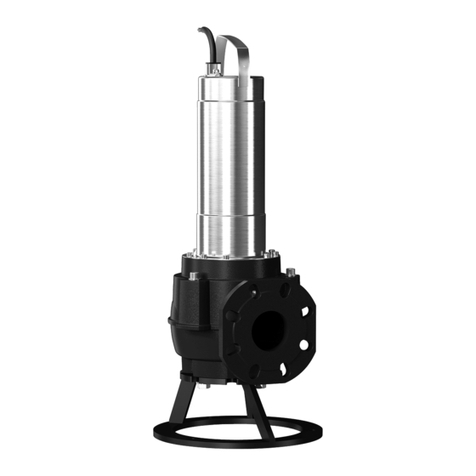
Wilo
Wilo Rexa FIT Series Installation and operating instructions

Dupla MARIN
Dupla MARIN P4 Smart Operating instruction
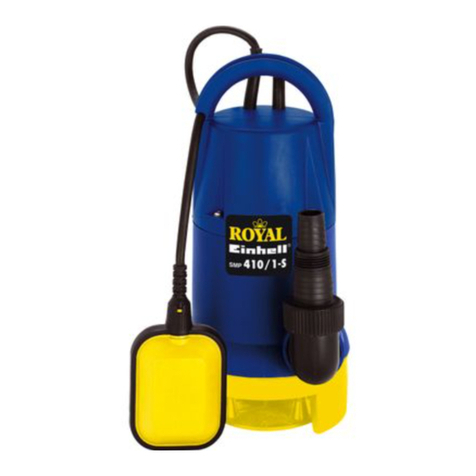
Einhell Royal
Einhell Royal SMP 410/1-S operating instructions

Flux
Flux F 550 Series Original main operating instructions
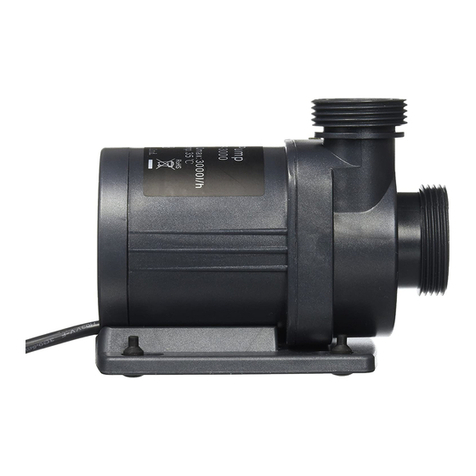
Jebao
Jebao DC Series owner's manual
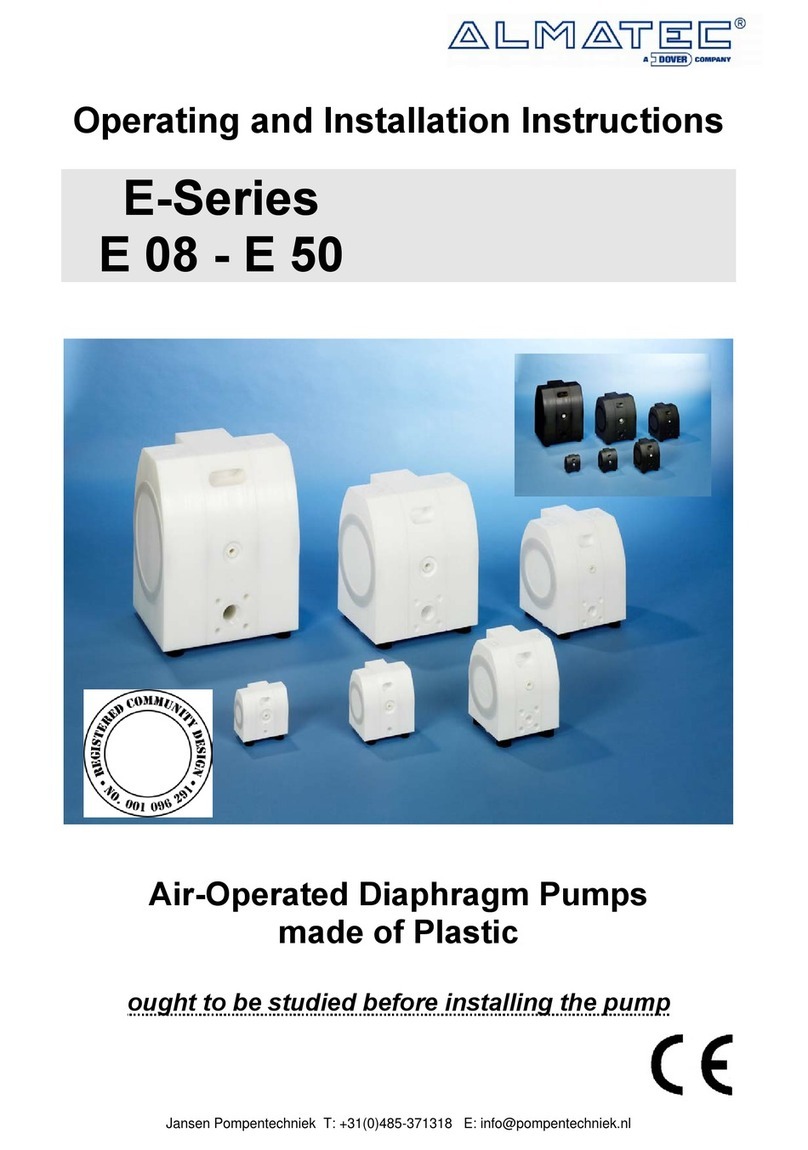
Almatec
Almatec E 08 Operating and installation instructions
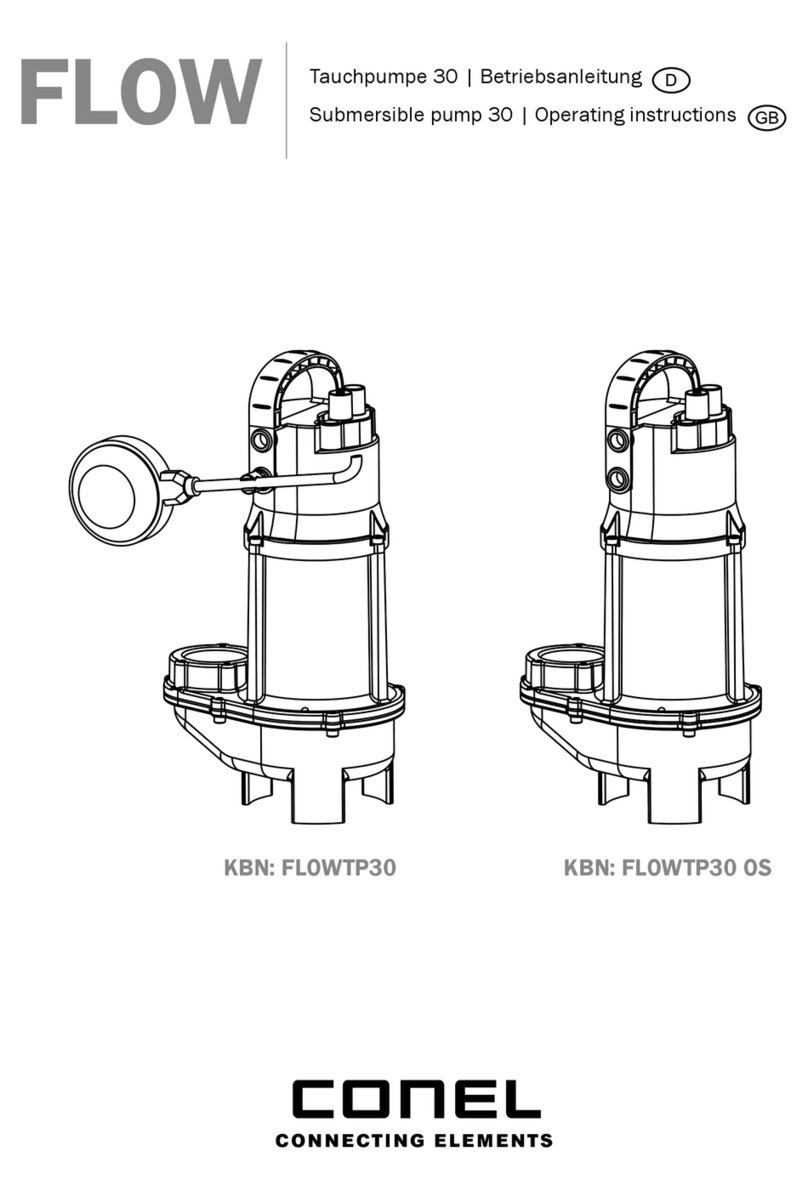
Conel
Conel FLOW Series operating instructions

Homa
Homa Saniquick II-UF Series Installation and operation instruction manual
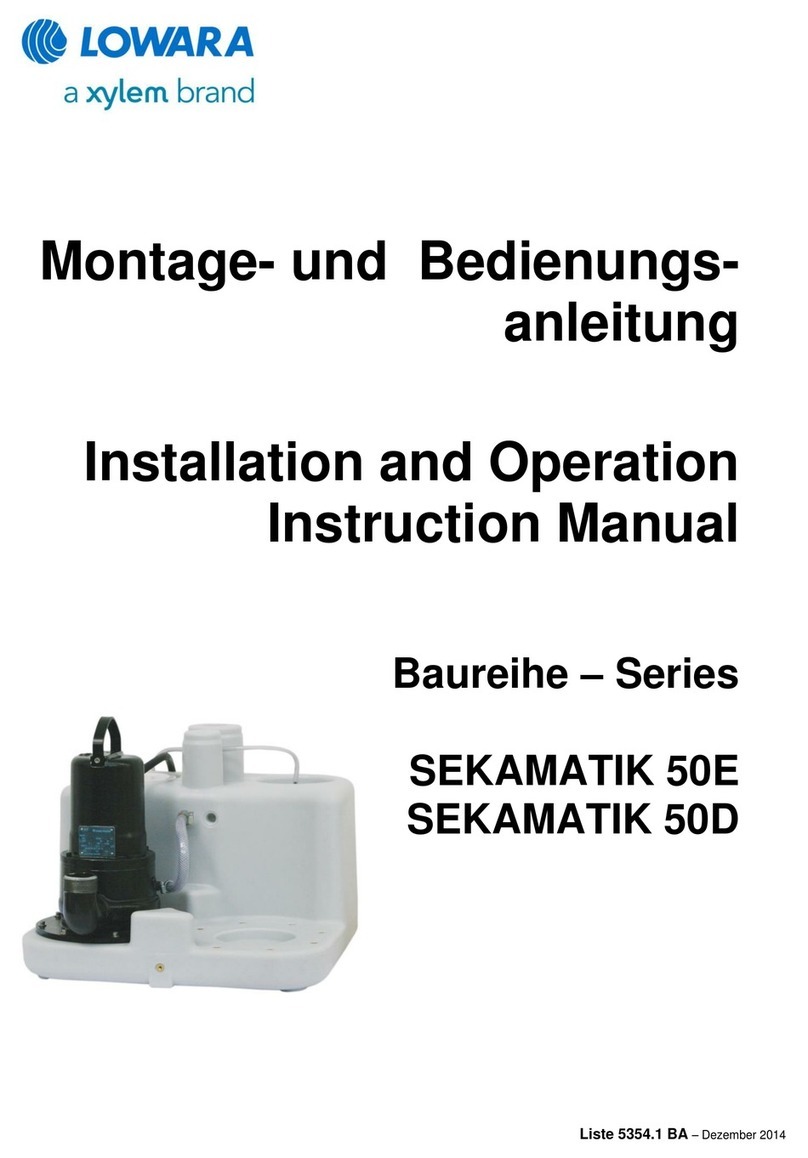
Xylem
Xylem LOWARA SEKAMATIK 50E Series Installation and operation instruction manual
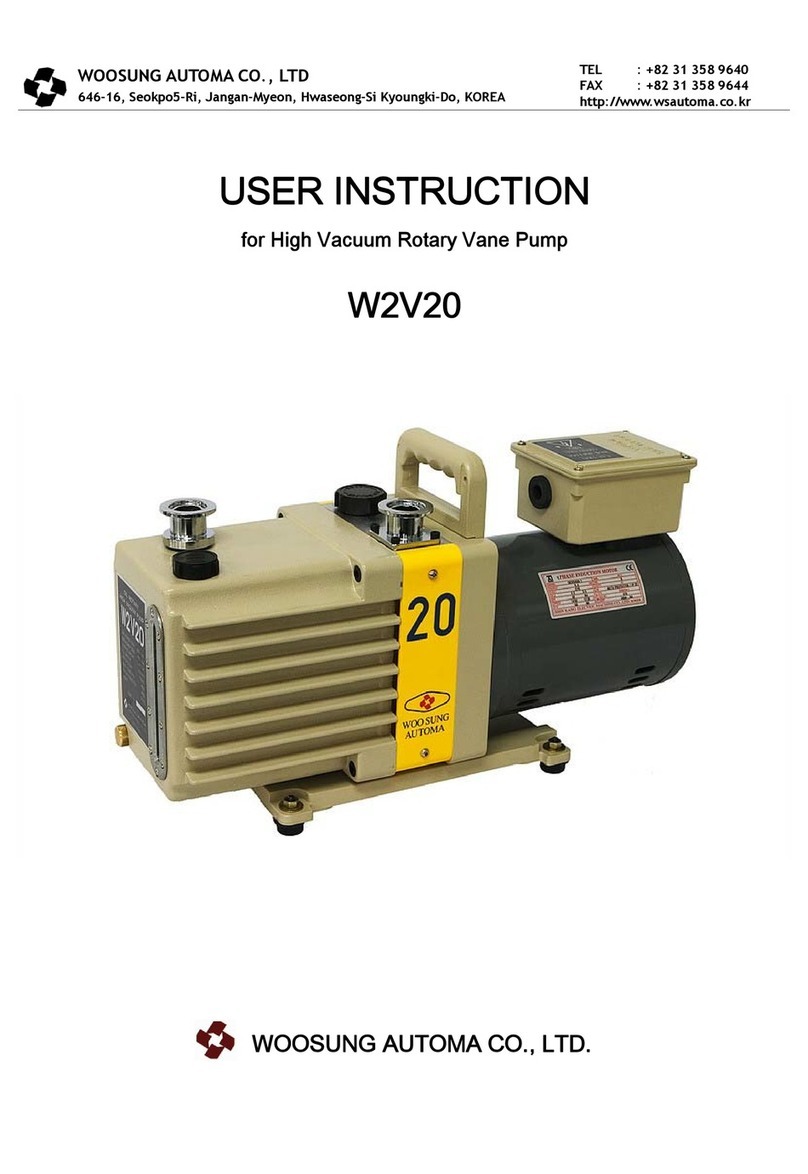
Woosung Automa
Woosung Automa W2V20 User instruction
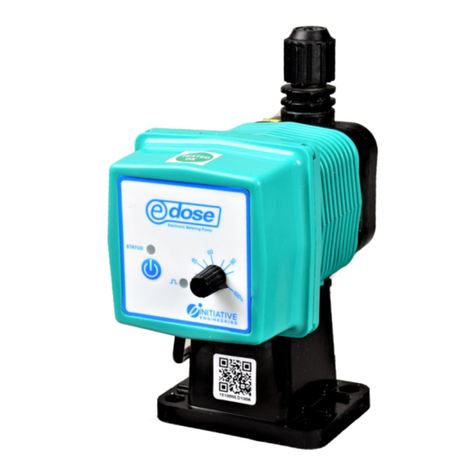
Initiative Engineering
Initiative Engineering edose Operation and maintenance manual
